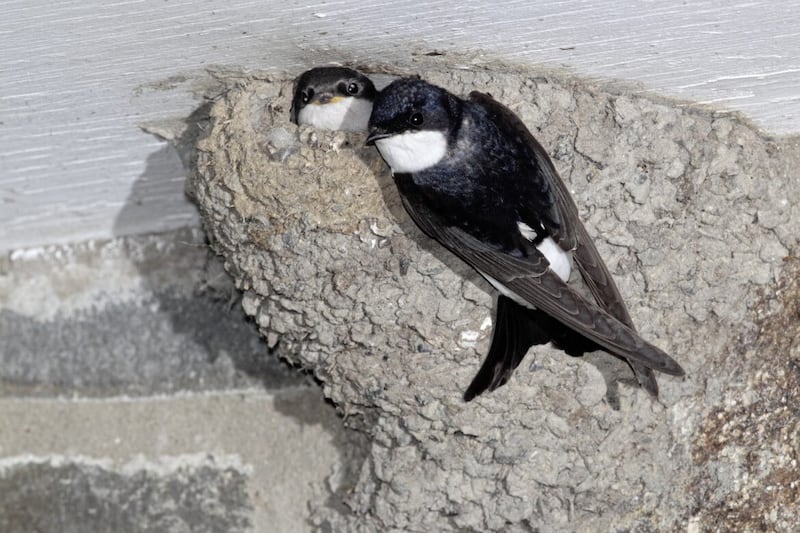IT’S very strange how events in the natural world sometimes present themselves. Sitting in a room in Ward two of the South West Acute Hospital, Enniskillen, with my ailing older brother Joseph, as the outside light faded and night closed in, flitting bird movement around the leafless boughs of Silver Birch trees outside caught my eye.
Looking through the window on to the enclosed courtyard below, dozens of Pied Wagtails gathered excitedly for their communal roost, jauntily moving around to find their chosen branch, twittering to each other in the process. After fifteen or twenty minutes the birds had settled, tucked up, with only their silhouettes and some white feathers visible.
The shelter from the warming corridors and wards have created a man-made safe space for these birds to assemble after a day of winter feeding. This behaviour, though not unusual was something I hadn’t seen before. A common occurrence in the countryside, it is also an urban phenomenon where it naturally attracts the attention of more people.
These birds were taking advantage of heat loss from the building and from the corridor lights surrounding the space. This may be just enough to lift the ambient temperature there a few degrees celsius above that of the surrounding countryside away from the building, a pattern known as ‘the urban heat island effect’.
No doubt the birds also find safe refuge from predators like owls or cats here in this oasis of calm.
One of the finest examples of this regular night roosting by wagtails can be found in Dublin’s O’ Connell Street, where existence of such a roost was first referenced by W J Williams (Irish Naturalists’ Journal) as far back as 1929, when "about a hundred pied wagtails were found roosting in a tree amid the noise of the busy traffic and in the full glare of the electric light".
By 1934, the numbers had risen to two thousand, occupying two trees. With numbers increasing annually, it was considered by a Mr John Barrington that in 1950 as many 3,600 wagtails were present, occupying three trees.
A very common and familiar bird to us all, Motacilla alba yarrellii is distinctively black and white. Long-tailed and sprightly, the bird is often seen, frantically wagging its tail up and down as it dashes about over lawns or car parks in search of insect food. It frequently calls out during its undulating flight.
The old Irish rhyme Wee Mr Wagtail put to music for children, highlights well its constant tail wagging and bobbing, with the lines:
Wee Mister Wagtail, hopping on a rock,
Daddy says your pretty tail is like a Goblin's clock.
Wee Willie Wagtail, how I love to see,
Wee Willie Wagtail, wag his tail at me.
A common resident in Ireland, it breeds in a wide variety of habitats, especially in urban areas where it is well known for choosing some unusual nesting sites, such as abandoned machinery or cars. Glasóg shráide in Irish, the Pied Wagtail has also many regional names, including Willie Wagtail, Molly Washdish, Peggy Dishwasher and Water Wagtail, all referencing its wagging tail or affinity with water.
Our dear brother Joseph, a good friend of so many people, passed from his happy earthly life a few days after I first saw the gathering wagtails. I like to think that maybe these kindly birds, holding nightly vigil by Joseph’s room, finally helped carry him on the wing beyond his discomfort of recent weeks, to his new home as they rose to roost under the night sky.
Strange how some events coincide.










